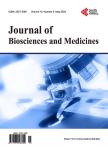Clinical Characteristics of Invasive Methicillin-Resistant Staphylococcus aureus at General Hospital in the Central Region of Japan from July 2014 to June 2015
Clinical Characteristics of Invasive Methicillin-Resistant Staphylococcus aureus at General Hospital in the Central Region of Japan from July 2014 to June 2015作者机构:Department of Bacteriology Graduate School of Medical Sciences Nagoya City University Nagoya Japan Department of Clinical Investigation Daido Hospital Nagoya Japan Department of Gastroenterology Daido Hospital Nagoya Japan School of Nursing Sugiyama Jyogakuen University Nagoya Japan
出 版 物:《Journal of Biosciences and Medicines》 (生物科学与医学(英文))
年 卷 期:2015年第3卷第9期
页 面:9-14页
学科分类:1002[医学-临床医学] 100214[医学-肿瘤学] 10[医学]
主 题:Methicillin-Resistant Staphylococcus aureus Susceptibility Antimicrobial Resistance Invasive Disease
摘 要:Methicillin-resistant Staphylococcus aureus is crucial pathogen caused severe invasive infection disease. This study was conducted to find out the prevalence and antimicrobial susceptibility pattern of invasive Methicillin-resistant Staphylococcus aureus isolates at general hospital in the central region of Japan from July 2014 to June 2015. Methicillin-resistant Staphylococcus aureus was identified by standard laboratory procedure. Antimicrobial susceptibility testing was performed by micro dilution assay according to CLSI recommendation. Invasive Methicillin-resistant Staphylococcus aureus disease was defined as isolation of bacteria from a normally sterile body site. One hundred seventy-one methicillin-resistant Staphylococcus aureus were isolated among which 95 (55.6%) were from inpatient and 76 (44.4%) were from outpatient. The age incidence of (0 - 1) years, (1 - 10) years, (11 - 40) years, (41 - 60) years and 60 years age groups were 18 (10.5%), 41 (24.0%), 15 (8.8%), 5 (2.9%), and 92 (53.8%) respectively. There was significant difference of age distribution between invasive and noninvasive disease in 0 - 1 years group and 11 - 40 years age group. Positive samples were received mostly from the pediatrics (56/32.7%), respiratory medicine (25/14.6%) and general medicine (25/14.6%). We also found the significant differences of department between invasive and noninvasive disease in pediatrics, dermatology, and surgery. Arbekacin, teicoplanin, and vancomycin were the most active antibiotics with 100% susceptible rates in our study. Our study revealed that erythromycin and gentamicin were more antimicrobial effective in invasive disease than in noninvasive disease significantly. Methicillin-resistant Staphylococcus aureus infection spreads worldwide easily and inadequate use of antibiotics contributes to uptake of their new antimicrobial resistance. Continuous antimicrobial surveys are need for guiding policy on the adequate use of antibiotics to reduce the morbid



